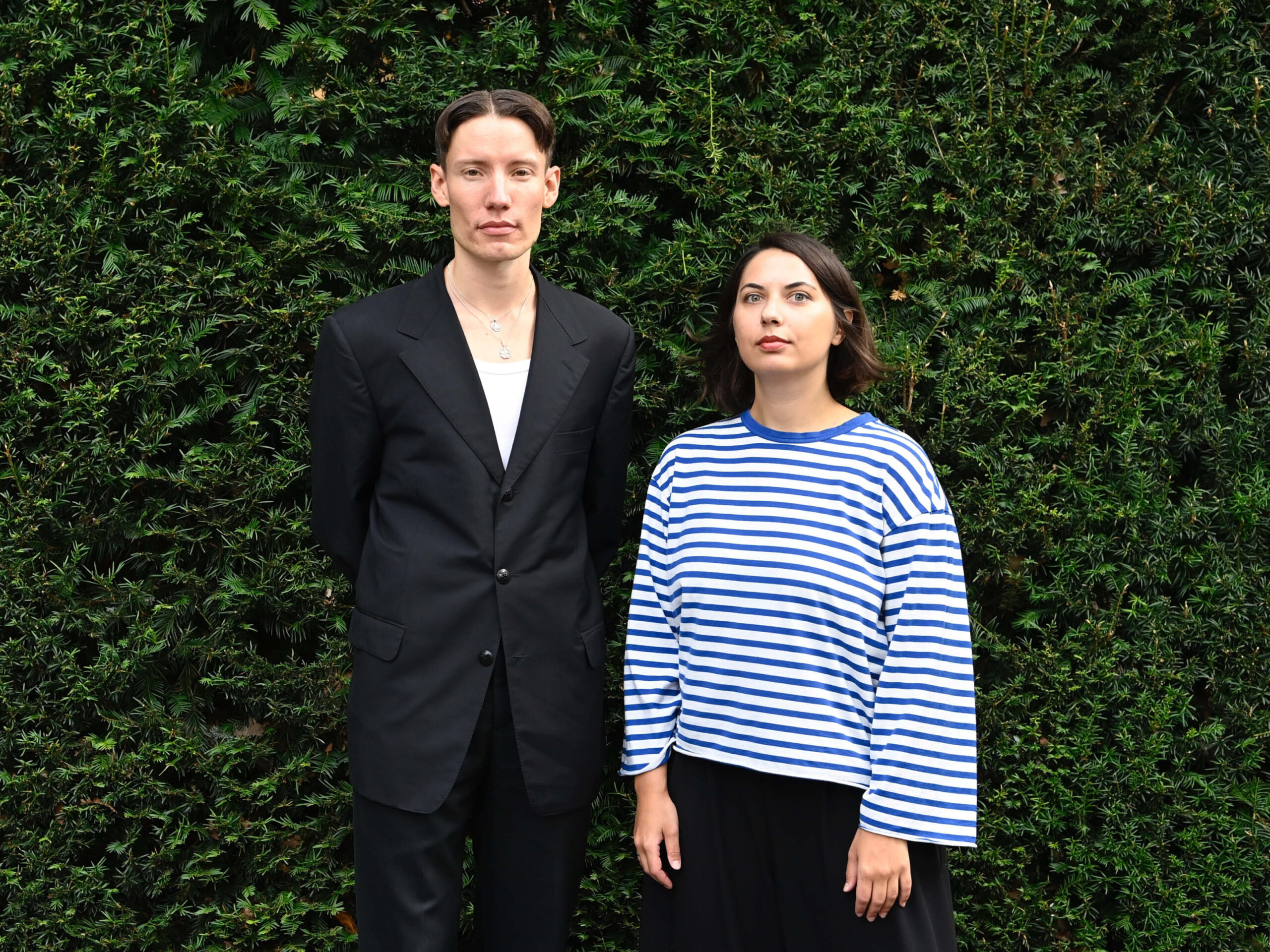Anastasia Savinova (b. 1988) explores humanity’s deep connection with nature by combining natural and industrial materials, to create a dialogue between the organic and the constructed. Her art highlights the delicate balance of ecosystems – in a time of ecological crisis – and focuses on co-existence, where different life forms and materials are intertwined to express both fragility and beauty. Through this working method, she blurs the lines between content and form, demonstrating that content is not only expressed through its medium, it can also emerge out of it.
Savinova’s fascination with the life-giving power of nature forms the foundation of Geosmin (2022-2024) highlighting the ‘dark, wild and life-giving energy of the earth’ through sculptures and drawings reminiscent of seeds or cocoons. Through her choice of materials and forms, she emphasises the vitality of nature and its capacity for regeneration. The title of the work, Geosmin, refers to the chemical compound that gives rain and beetroot their earthy scent – a scent that, like our relationship with nature, is both familiar and difficult to define.
In Dialects of the Deep (2023), Savinova explores the relationship between humans and the sea, focusing on the endangered cod ecosystem. Using found materials such as old fishing boats and glass floats, she creates sculptures that resemble fish bodies and fish eggs. The installation combines sculpture and sound to provide an immersive experience, highlighting the otherwise invisible sounds of the underwater world, where over half of the fish species communicate. In collaboration with a sound artist and a marine biologist, the work pays special attention to the mating sounds of cod, highlighting both the beauty and vulnerability of the sea – in line with Savinova’s theme of endangered ecosystems.
By reshaping traditional objects, Erik Thörnqvist (b. 1994) gives them new symbolic meaning that express agency and freedom, beyond their original functions. Particularly interested in the role of ornamentation within modernism, he questions its place in designed environments and explores how these aesthetic expressions can create space for subversive interpretations and queer representation. Deliberately coded and ambiguous, Thörnqvist’s works resist easy interpretations and defy norms in a powerful way, engaging the viewer to confront social issues and creating new narratives where body and identity can be renegotiated and redefined.
Raum Planner (2024) presents a 1:1 detail of the interior of Villa Müller, inspired by Adolf Loos’s ‘Raumplan’ concept, where rooms are given different height levels based on their function rather than being placed on separate floors. Here Thörnqvist explores the boundary between private and public, with themes of transparency and voyeurism. Inspired by architectural historian Beatriz Colomina’s analysis of Villa Müller in Sexuality and Space (1992), the work explores the tension between power and vulnerability, especially through an elevated seating area that allows for both observing and being observed.
The installation Un chant d’amour (2024), inspired by Jean Genet’s film with the same title, links to Thörnqvist’s themes through its exploration of boundaries, intimacy and the structures that dictates human interaction. Through the architecture of the prison and a scene where two prisoners share cigarette smoke through a straw to overcome isolation, the film highlights how people can be both close and unreachable. This reflects Thörnqvist’s interest in the body and power in constructed environments. Above all, the installation creates a place where fiction and reality meet – where we can fantasise about who is on the other side.
Through their works, both artists create a connection between the quiet and the catastrophic, between the personal and the political. By introducing an unexpected presence, the works offer new perspectives on our place in the world and remind us of the interdependence between humans, nature and the spaces we create.
– Yuvinka Medina, Senior Curator
About Anastasia Savinova
Anastasia Savinova graduated with a Master’s degree in Fine Arts from the Academy of Fine Arts at Umeå University in 2022. Her artistic practice revolves around places, ecologies and the relationship of humans to the more-than-human world. She explores how everything is intertwined and how we humans constantly appear as part of something bigger. Her installations often consist of different elements: sculpture, video, sound, found objects, drawing – and recall multi-species habitats. She conjures up images of both earthly and otherworldly creatures, weaving together natural and industrial materials, from household objects to large boats, plants, feathers and shells. Her works address the beauty and sublimity of the world, intimate connections between organisms and the fragility of ecosystems in the age of mass extinction. Anastasia Savinova is represented in the collections of Moderna Museet and KIN – Museum of Contemporary Art, several regional and municipal collections in Sweden and in the collection of Skrei Museum in Norway. She is currently based in Umeå.
About Erik Thörnqvist
Erik Thörnqvist grew up in Luleå and graduated from the Royal Institute of Art in 2023 with a Master’s degree in Fine Arts. Through sculpture, Thörnqvist explores how abstract ideas become concrete forms in our world. One aspect of Thörnqvist’s artistic practice is to redefine the modernist view of ornamentation within designed environments. He explores how this aesthetic ideal has reshaped our relationship to the body, and how it can provide a site for subversion and queer identity. By appropriating and re-evaluating the ornamental, he explores its potential as a vehicle for other narratives. Thörnqvist has previously exhibited at the Luleå Biennial 2020 – Time on Earth, SOMA (Mexico City), Lunds Konsthall, Final Hot Desert (Salt Lake City), KIN Museum of Contemporary Art (Kiruna), Konstnärshuset and Luleå Konsthall. He lives and works in Stockholm.
Images: Erik Thörnqvist & Anastasia Savinova, Maria Bonnier Dahlin Foundation Grant Recipients 2024. Photo: Jean-Baptiste Béranger
